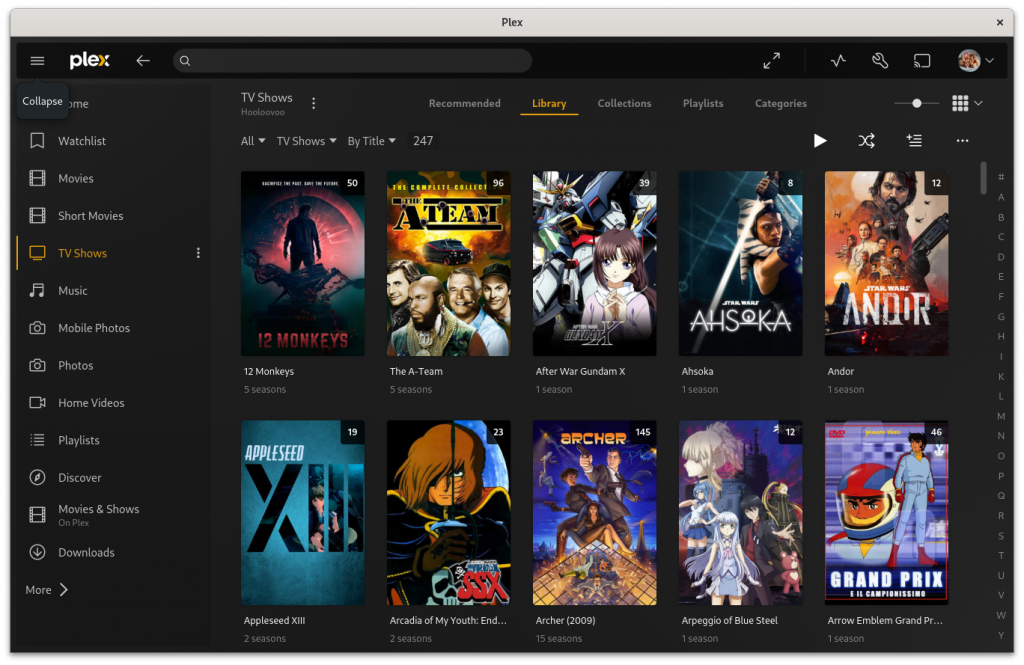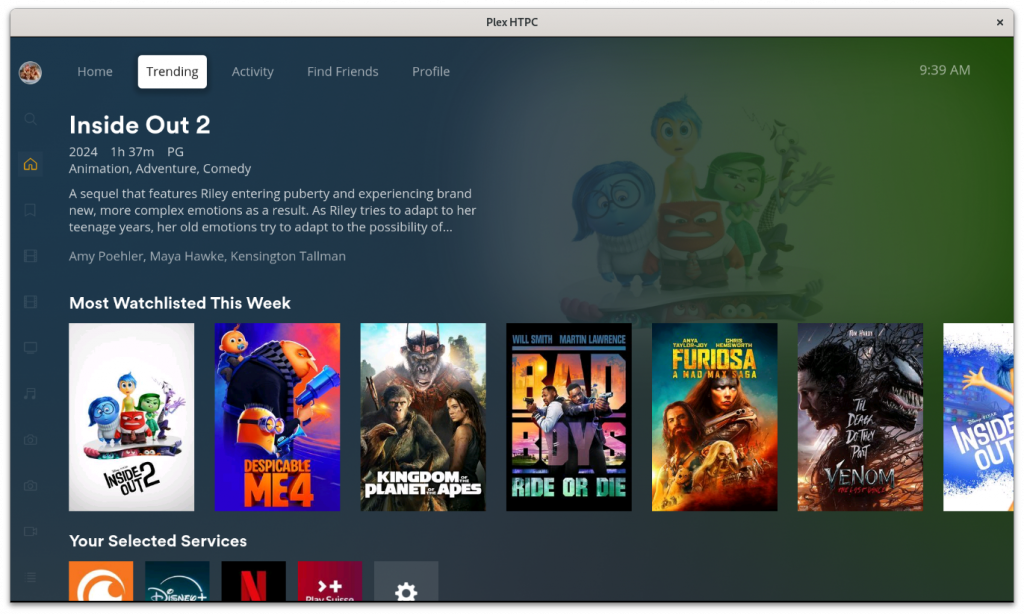Plex Desktop and HTPC clients are available again. Now Plex ships a precompiled QT 6 libraries with the private API enabled that allows for an easy packaging. The packages are available for EL9+ and Fedora on the x86_64 architecture only.
Just install the one you need via DNF. For the desktop application:
# dnf -y install PlexDesktop

For the HTPC application:
# dnf -y install plexHTPC

The packages come with every possible system library in use and can be installed in parallel. They both suggest all the VA-API drivers available in the multimedia repository.
Keep in mind that both sport MPV as the main player, so you can still customize the player options as you see fit. For example to force NVIDIA’s hardware decoding in both applications:
$ cat .local/share/plex/mpv.conf
hwdec=nvdec
The HTPC optional package that creates an auto starting “HTPC session” for set top box media players is not restored yet, I will add it in the next days.
The packages bundle QT 6 (for the web interface engine) with the private API enabled, FFMPeg with a progress API status reporting, a custom MPV and a CEC library in the HTPC client.
Why not using the official Flatpak installation directly? First of all I don’t like all the mounting and folder redirection of Flatpak, but also:
# flatpak install tv.plex.PlexDesktop tv.plex.PlexHTPC
Looking for matches…
Required runtime for tv.plex.PlexHTPC/x86_64/stable (runtime/org.freedesktop.Platform/x86_64/23.08) found in remote flathub
Do you want to install it? [Y/n]: y
tv.plex.PlexHTPC permissions:
ipc network pulseaudio x11 devices dbus access [1]
[1] org.freedesktop.PowerManagement, org.freedesktop.ScreenSaver
tv.plex.PlexDesktop permissions:
ipc network pulseaudio x11 devices dbus access [1]
[1] org.freedesktop.ScreenSaver
ID Branch Op Remote Download
1. org.freedesktop.Platform.GL.default 23.08 i flathub < 172.2 MB
2. org.freedesktop.Platform.GL.default 23.08-extra i flathub < 172.2 MB
3. org.freedesktop.Platform.GL.nvidia-555-58-02 1.4 i flathub < 305.0 MB
4. org.freedesktop.Platform.Locale 23.08 i flathub < 360.2 MB (partial)
5. org.freedesktop.Platform.openh264 2.2.0 i flathub < 944.3 kB
6. org.freedesktop.Platform 23.08 i flathub < 227.5 MB
7. tv.plex.PlexHTPC stable i flathub < 150.9 MB
8. tv.plex.PlexDesktop stable i flathub < 149.2 MB
Proceed with these changes to the system installation? [Y/n]:
That’s a whopping 1.5 GiB compressed download compared to the package footprint:
$ ls -1hs Plex*
106M PlexDesktop-1.96.0.177-3.fc40.x86_64.rpm
105M PlexHTPC-1.64.0.170-2.fc40.x86_64.rpm
That’s more than 7 times the size. Flatpak applications with duplicate libraries everywhere are not really my taste.







Recent Comments